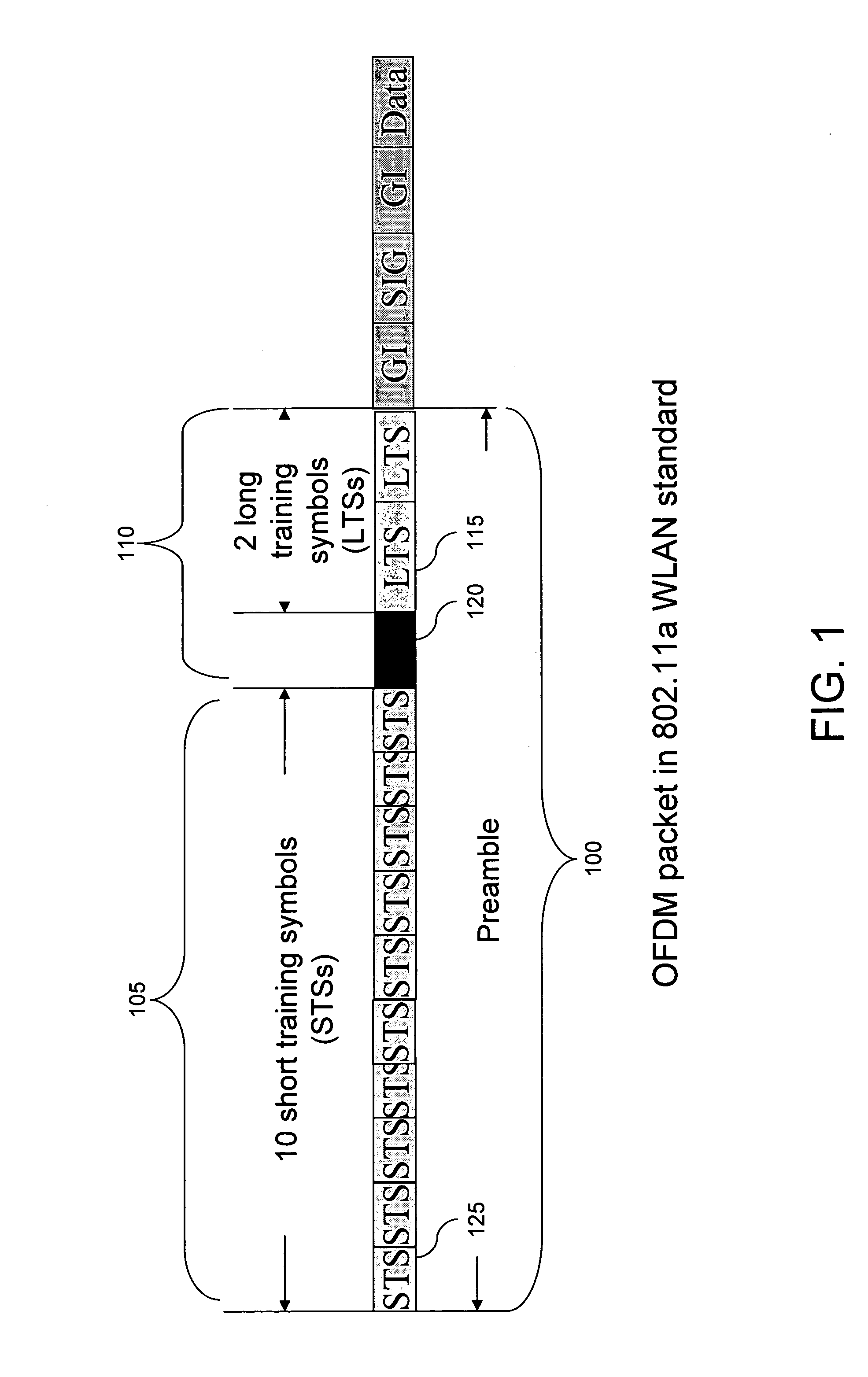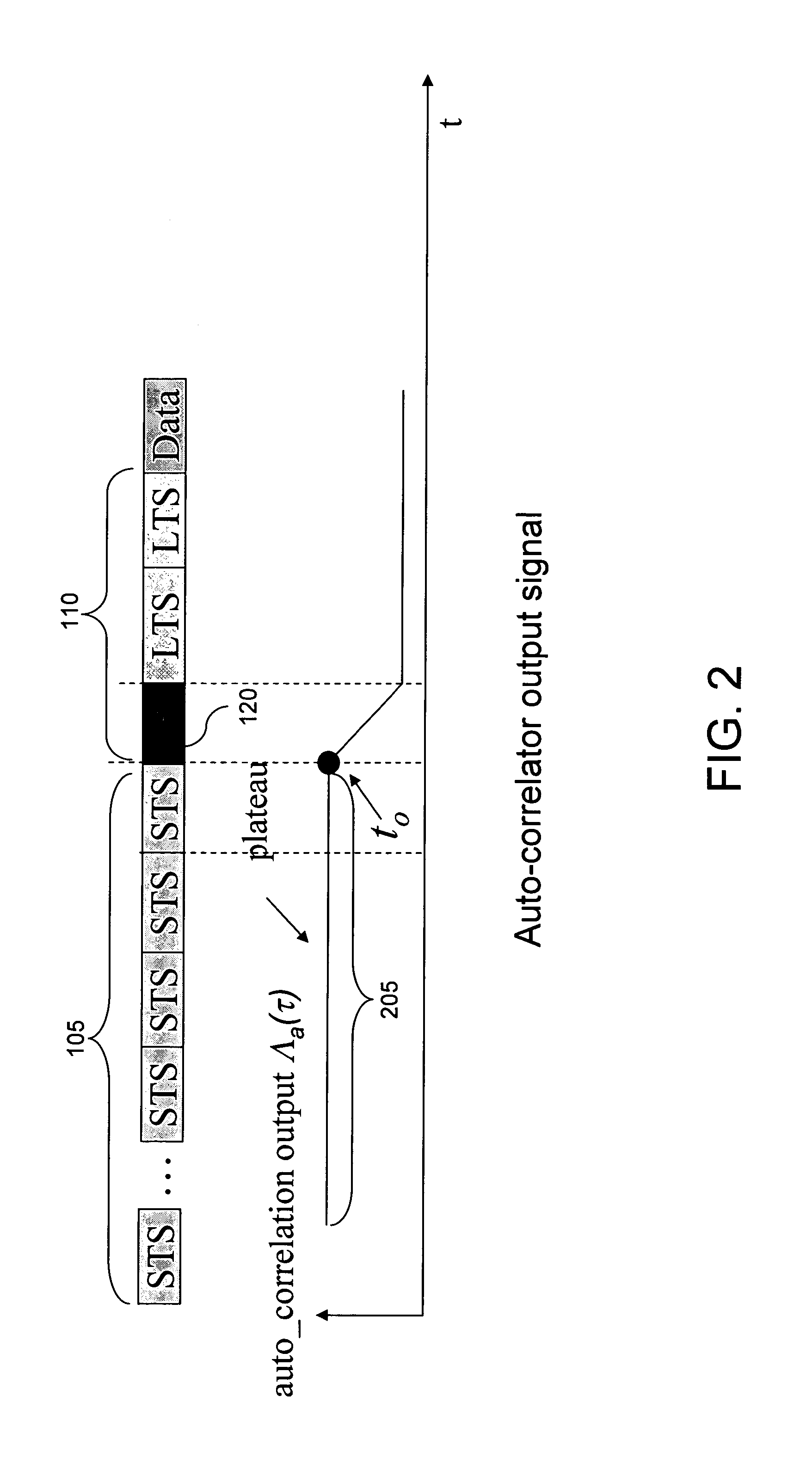Frame timing synchronization for orthogonal frequency division multiplexing (OFDM)
a timing synchronization and orthogonal frequency division technology, applied in the field of signal processing, can solve the problems of synchronization error sensitivity, high complexity of cross-correlation operation, timing ambiguity caused,
- Summary
- Abstract
- Description
- Claims
- Application Information
AI Technical Summary
Benefits of technology
Problems solved by technology
Method used
Image
Examples
Embodiment Construction
Overview
[0022]Frame timing synchronization techniques for orthogonal frequency division multiplexing (OFDM) based communications are presented that are designed to overcome the problems associated with conventional auto-correlation and cross-correlation based synchronization techniques. In one example, a coarse frame timing synchronization technique includes concatenating a sliding window differentiator with a conventional auto-correlation device to mitigate a timing ambiguity caused by a plateau in the auto-correlator output signal.
[0023]In another example, a fine frame timing synchronization technique includes defining a signal-to-interference ratio (SIR) metric to improve timing precision of a conventional cross-correlation device. As will be described in more detail below, compared to conventional cross-correlation synchronization techniques, this fine frame timing synchronization technique is more robust to multi-paths or pseudo multi-paths caused by use of the cyclic delay div...
PUM
 Login to View More
Login to View More Abstract
Description
Claims
Application Information
 Login to View More
Login to View More - R&D
- Intellectual Property
- Life Sciences
- Materials
- Tech Scout
- Unparalleled Data Quality
- Higher Quality Content
- 60% Fewer Hallucinations
Browse by: Latest US Patents, China's latest patents, Technical Efficacy Thesaurus, Application Domain, Technology Topic, Popular Technical Reports.
© 2025 PatSnap. All rights reserved.Legal|Privacy policy|Modern Slavery Act Transparency Statement|Sitemap|About US| Contact US: help@patsnap.com



